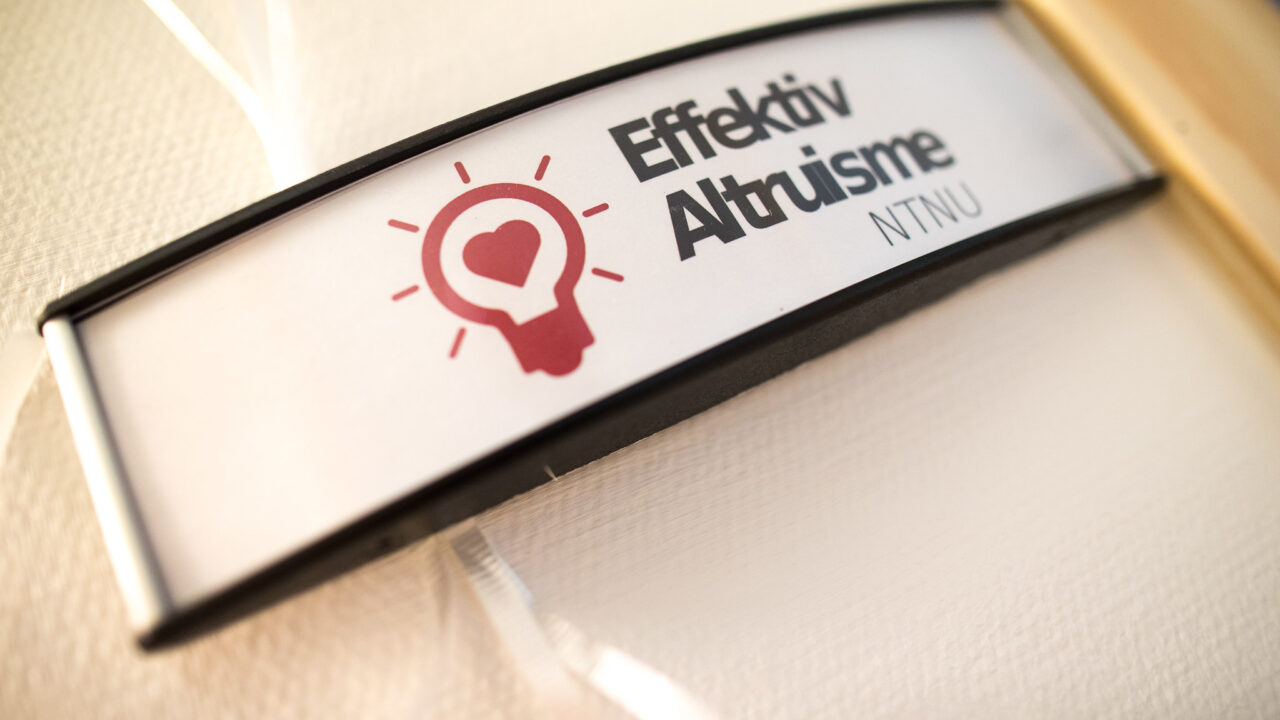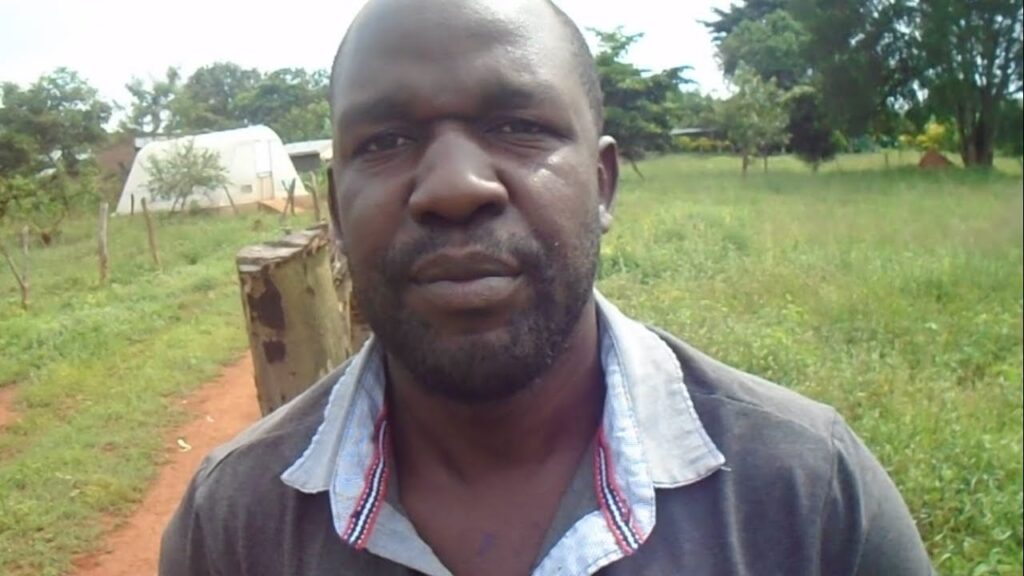Giving Altruism a Bad Name
Effective Altruism’s metrics-driven model of philanthropy is elitist, condescending and — most damning of all — extremely ineffective. A photo from the Effective Altruism program at NTNU by Faculty of Information Technology and Electrical Engineering at NTNU via Flickr / CC BY-NC 2.0
This is Part of the "Eugenics in the Twenty-First Century: New Names, Old Ideas" Dig series
A photo from the Effective Altruism program at NTNU by Faculty of Information Technology and Electrical Engineering at NTNU via Flickr / CC BY-NC 2.0
This is Part of the "Eugenics in the Twenty-First Century: New Names, Old Ideas" Dig series
The effective altruist (EA) movement is young. It was only around 2010 that it started to take shape, yet over the past 13 years it’s become a “powerful global network of think tanks, nonprofit organizations and wealthy donors that dole out hundreds of millions of dollars in annual charitable donations.” If you were to ask someone from the EA community, they’d say this is great news. In their telling of the story, the movement “has saved hundreds of thousands of lives” and “made the world a lot better.”
But is this true?
In a recent book titled “The Good It Promises, the Harm It Does,” an impressive group of scholars and activists make the case that EA has, in fact, left quite a bit of wreckage in its wake. One chapter notes that “#MeToo advocates [have] described how the funding metrics of EA ignored hostile work environments, and how many have been hurt by known serial sexual exploiters who lead groups assessed as ‘effective’ by EA-tied groups.” A recent Time magazine article explores precisely this topic, reporting on several women who describe, in disturbing detail, how the EA community “has a toxic culture of sexual harassment and abuse.” The problem is, apparently, pervasive.
Another author, Brenda Sanders, reports that she “was once told that a prominent animal rights movement donor would never fund my work because ‘there’s no way to prove how effective it is.’” Her work focuses on vegan activism in low-income communities of color, which involves “hosting workshops, classes, festivals, food tastings, film screenings and other events that introduce people in low-income communities of color to the benefits of making healthier, kinder, more sustainable choices.” After rejecting what she calls the “white-centric view of activism,” i.e., the idea that one should strive to maximize one’s “return on investment,” Sanders has a few choice words for this unnamed donor, “some rich white guy.” “I would also point out,” she writes, “that refusing to support work being done by a Black activist in Black communities is upholding white supremacist ideas about which communities are worthy of support and which ones aren’t. In other words, it’s racist, plain and simple.”
In an earlier article I wrote for Truthdig, racism was a prominent theme. Pretty much everywhere one peeks around the neighborhood of EA, one discovers hints of racism — to say nothing of ableism, classism and sexism. After revelations last month that Nick Bostrom, one of the most influential philosophers within EA, wrote in old email claiming that “Blacks are more stupid than whites,” followed by the N-word, it became clear that many EAs are actually sympathetic with the view that racial differences in “intelligence” do exist, or at least aren’t particularly bothered by his claim. Others in the community have approvingly cited the work of Charles Murray, world-famous for his scientific racism, and one of the main focuses of EA — so-called “longtermism” — traces its roots right back to the 20th-century eugenics movement. None of this would be particularly noteworthy (the world is full of rotten ideas) except for the fact that EA and its longtermist offshoot have become extremely influential over the past decade.
Pretty much everywhere one peeks around the neighborhood of EA, one discovers hints of racism — to say nothing of ableism, classism and sexism.
In this piece for my Truthdig series “Eugenics in the Twenty-First Century: New Names, Old Ideas,” I’d like to take a closer look at how EA actually causes more harm than good, and how it’s approach to philanthropy further entrenches the political system of white supremacy — i.e., the continuing dominance of white people within the power structures that define our world today.
Our case study will be that of Anthony Kalulu, an Ugandan farmer who has, in his words, “spent the vast portion of my life in ultra poverty.” He’s never “stepped a foot outside of Sub Saharan Africa, the world’s epicenter for chronic poverty,” and even as recently as 2015 he “was still going entire days without food”— a situation he’s been dealing with “since my years in childhood.” I first became aware of Kalulu last December, after the renowned AI researcher Timnit Gebru tweeted about some of his work. Since then, Kalulu and I have become friends, and I have donated twice to his grassroots organization the Uganda Community Farm (UFC), which we’ll get to below.
In a series of poignant and insightful articles on his website — as well as three for The Guardian — Kalulu makes the case that traditional philanthropy simply doesn’t work. As I understand Kalulu’s argument, what happens is this: charities from the Global North adopt a “top-down approach” to alleviating poverty that doesn’t take seriously the unique challenges, struggles and circumstances of particular regions of the world. With a kind of “one size fits all” mentality, they tend to impose programs or strategies mostly devised by white people in the Global North, and fail to properly recognize that the root causes of poverty may differ from one region to the next. Without addressing these unique-to-the-region causes, living conditions might improve a bit while the charity is present, but once they’re gone, everything falls apart again. Fundamental, lasting change never happens.
Kalulu thus argues that this whole paradigm needs to shift. What’s needed is a “bottom-up approach” that takes seriously the knowledge that local people have accumulated of the specific drivers of poverty in their particular regions. In practice, this would mean directly funding grassroots organizations run by locals — people with intimate, first-hand, ground-level knowledge of what’s going on. It’s precisely this knowledge that would enable such organizations to develop anti-poverty programs that would be custom designed to address the root causes of a community’s problem, thus enabling that community to pull itself out of poverty once and for all. As Kalulu puts it, traditional philanthropy pushes “their own predetermined solutions, which aren’t rooted in the lived experiences of the extreme poor,” and hence aren’t able to fix, in any permanent way, what’s broken. Not every region is the same, a fact that traditional philanthropic approaches neglect with their “one- size-fits-all” approach.

Credit: Uganda Community Farm
Another way to think about this goes as follows: due in part to the ongoing legacies and influence of colonialism, exploitation and extractive capitalism, the Global North has most of the power and wealth. By utilizing a top-down approach, people in the Global North get to retain this power. That is to say, they maintain power over who gets wealth transferred to them and how this wealth is transferred. The decision-making process remains in the hands of mostly white people in the Global North, who live literally thousands of miles away from countries like Uganda and have no first-hand knowledge of what, say, Ugandan farmers are actually struggling with. Consequently, the traditional approach is profoundly disempowering to those it aims to help: recipients of charity become merely passive participants in trying to solve their problems, rather than decision-makers in their own right. Perhaps you can see how this further entrenches the political system of white supremacy.
It also explains why philanthropic efforts of the past have so often failed to extricate people from the cycle of poverty: they aren’t flexible enough, and don’t have enough knowledge of the unique circumstances of specific communities, to implement programs that can address the root causes of destitution. This is why Kalulu argues that we need a new paradigm: a bottom-up approach that transfers not only wealth but power to those suffering from extreme poverty, thus empowering these people to finally fix what’s broken in their communities, regions, local economies, political systems and so on. Should money be spent building a new school, highway or food processing plant? Should cash be transferred straight into the pockets of local individuals, as the charity GiveDirectly does? Is the best use of funds buying anti-malaria bed nets?
Perhaps those actually living these realities are best positioned to answer such questions. Right now, though, these people have little or no voice. They have no real say in matters that directly affect them, their communities and their collective futures.
EA enters the picture because, in Kalulu’s words, it’s “even worse than traditional philanthropy in the way it excludes those of us who are directly battling ultra poverty in the Global South.” There are two interrelated reasons for this: first, EA makes it even less likely that grassroots organizations will ever get funded. The reason is that the EA movement insists that members should donate exclusively to those causes, charities or organizations deemed “effective” according to certain metrics or criteria, developed by EA organizations like GiveWell, which is based in San Francisco. If an organization doesn’t qualify as “effective,” then it doesn’t deserve funding. This is what “doing good better” means: funneling money to those, and only those, charities that get the biggest bang for one’s buck. As Kalulu makes this point,
in the name of being “effective,” EA has … indoctrinated its followers to strictly support a small, select list of charities that have been labeled “most effective” by the movement’s own charity raters like GiveWell, Giving What We Can, The Life You Can Save, etc., of which the named charities, right now, are all Western. … [I]n the eyes of a true effective altruist, lending a hand directly to people like us, is not one of those ways of doing the most good, unless we are part of a charity that has been declared by organizations like GiveWell as “effective” — which, at least for now, means being part of a Western charity.
Consequently, people like Kalulu, who are pleading for money to support their grassroots organizations, are left with even less hope than before. At least with traditional philanthropy, some grassroots organizations occasionally will get funded. “For traditional philanthropy, albeit being a sector (or a community) that almost never supports the poor directly,” Kalulu writes, “there are countless occasions where even organizations like the Gates Foundation have funded the smallest grassroots organizations in the Global South. Not the case with effective altruism.”
The second problem concerns the metrics that EA uses, which are designed such that many grassroots organizations in the Global South could probably never make the cut. As Alice Crary observes in her chapter of “The Good It Promises, the Harm It Does,” “EA’s metrics are best suited to detect the short-term impact of particular actions, so its tendency to discount the impact of coordinated actions can be seen as reflecting ‘measurability bias.’” Although her focus here is social movements, in particular, the same idea applies to the case at hand: grassroots efforts to implement programs that produce long-lasting, rather than merely short-term or immediate, improvements in specific communities or regions.
For example, GiveWell calculates that just $3,340 can save the life of a child if donated to the Against Malaria Foundation, which distributes bed nets to people in regions of the world where malaria is prevalent. This is an easy-to-measure return on one’s investment, alluding once more to the “white-centric view of activism” that Sanders mentions above. Now consider Kalulu’s own grassroots organization, the Uganda Community Farm (UCF). One of its central goals is to build an agro-processing plant that would enable farmers in the area to establish reliable links to ready markets. One reason farmers in the area are poor, Kalulu reports, is that while they have produce to sell, they don’t have any consistent way to actually sell it. An agro-processing plant would provide the infrastructure necessary for farmers to climb out, and stay out, of poverty.
But notice how difficult it would be to measure the benefits of this plant, especially in the short term. Exactly how many lives would be saved? Would the agro-processing plant save more children per $3,340 than the Against Malaria Foundation? The “return” for investing in UCF’s project isn’t easily measured by EA’s metrics, and this puts it at a profound disadvantage; indeed, it’s not clear that it could ever qualify as “effective” compared to, say, distributing bed nets, given the “measurability bias” of EA’s framework. But perhaps this isn’t a problem with grassroots organizations. It’s a problem with the metrics used to determine whether a cause is worthy of being funded. “As someone who lives in one of the poorest corners of the planet,” Kalulu writes,
I can tell you that EA’s idea of “effective” is mostly correct only from a Western viewpoint, and again, it is all because the global development community as a whole, EA included, has chosen to make the extreme poor passive participants in creating the change they want to see. If you visited a truly impoverished country like Uganda, you will quickly notice that many of the things that effective altruists call “effective” … are the same short-term, disposable solutions that have not only kept their recipients in abject poverty, but also, they are the very kind of solutions that often disappear the same day their proponents exit.
These major shortcomings of the EA approach to philanthropy got personal for Kalulu in 2021 after he “contacted about a hundred people (mostly individuals) who identify as effective altruists, asking them not for money, but for social media posts about the plight of poverty in my region, and my quest to do something about it.” Posting something on social media costs nothing, yet only a single EA agreed to share a link to Kalulu’s Go Get Funding webpage. One EA responded to Kalulu’s request: “I usually share projects that have been vetted by GiveWell or a similar organization…Why do you think your project is more effective compared to all the others?”
So, it’s pretty clear that top-down philanthropy isn’t working, and yet the EA movement — even more than traditional efforts — has embraced precisely this approach. Making matters worse, Kalulu gestures at the fact that a growing number of EAs are embracing longtermism, which, in its radical form, holds that we should focus our “charitable” efforts almost entirely on shaping the very far future, rather than on helping those in need today. The claim isn’t that people who might (or might not) exist in the future — thousands, millions, billions and trillions of years from now — are more important. The reasoning is that every person, whether they are an actual person or a merely possible person in the future, should count for one. And since there could be way more people in the future if we colonize the universe and create huge computer simulations full of digital beings, trying to positively influence their lives should take priority over the lives of people suffering right now.
This is basically a numbers game. For example, imagine that there’s a 0.0000000000000001 chance that some action you take today could add one unit of happiness to 1,000,000,000,000,000,000 people who exist in the far future. This yields an “expected value,” as longtermists would say, of 100, by simply multiplying these two numbers together. Now imagine that there’s a different action you could take that would, with a probability of 0.5, add 100 units of happiness to one person right now — say, someone struggling to buy three meals a day. This yields an expected value of only 50. Since 100 is twice as big as 50, if you were forced to choose between these two actions, you should take the first one — not the second!
So, it’s pretty clear that top-down philanthropy isn’t working, and yet the EA movement — even more than traditional efforts — has embraced precisely this approach.
This is how EA longtermists reason, and it’s what leads them to deprioritize the problem of global poverty, that is, relative to the importance of “helping” people in the far future — even if the probability of succeeding is extremely small. In fact, longtermists argue that one way to “help” these people is to ensure that they come to exist in the first place. On their view, which is highly contentious among philosophers, “could exist” implies “should exist” assuming that such people would have lives that are better than miserable. It follows that the non-existence of a potentially vast number of future people — many living in computer simulations — would constitute an enormous moral catastrophe, much greater than the catastrophe of global poverty in the present. Again, this is not because current people matter less, but because there are so many “happy” people who could (and therefore should) exist in the future. Since one way these hordes of unborn digital beings could fail to exist is if humanity were to go extinct, this line of reasoning leads longtermists to prioritize mitigating risks to our extinction over most everything else, even if these risks are highly speculative and very improbable. Hence, as Kalulu observes, longtermists “consider things like artificial intelligence as being existential threats to humanity (before they pose any threat), yet the movement won’t even lend a hand directly to those of us who are already starving in the present day.”
This might sound outrageous, but it’s a straightforward implication of the longtermist worldview. To quote one of the leading longtermists, Hilary Greaves, on this point:
There’s a clear case for transferring resources from the affluent Western world to the global poor. But longtermist lines of thought suggest that something else would be better still. There are a lot of candidates for potentially very high value longtermist interventions. … The most clear-cut one, I think, is reducing risks of premature human extinction. … Even if we can do anything that reduces the probability of premature human extinction by a tiny amount, in expected value terms, that is, when you average across your uncertainty, the contribution of that kind of intervention could be massive — much greater, even, than the best things we can do in the area of global poverty.
These are some reasons that EA is even worse than traditional philanthropy. On the one hand, it hopelessly sidelines grassroots projects like Kalulu’s own UCF, and in doing so keeps all the decision-making power in the hands of mostly white people in the Global North. As Kalulu writes, “by deciding not to directly support the people who live in ultra poverty,” EA “not only squanders the chance to catalyze lasting, self-sustainable change, but also effectively puts the lived experiences of the world’s ultra poor to waste.”
On the other hand, the EA movement has convinced an increasing fraction of its community over the past five years that global poverty as a whole isn’t the most “effective” cause area. Instead, we should redirect our finite resources to ensuring that humanity survives long enough to colonize space, spread throughout the accessible universe, populate exoplanets and build giant computer simulations in which trillions and trillions of digital people live supposedly “happy” lives. Although not all EAs have pivoted toward longtermism, and hence away from global poverty, the most prominent members of the EA community like Toby Ord and William MacAskill — both of whom once focused primarily on global poverty rather than the far future — have been vigorously promoting the longtermist perspective, and as I’ve discussed on many occasions before, longtermism is becoming hugely influential in the world more generally.
The result is a truly heartbreaking situation for people like Kalulu. As he reports in his critique of EA, referencing the exchange with an EA mentioned earlier:
Looking back, I couldn’t help but wonder how people like us will really ever escape poverty. I was talking with him right here in my village of Namisita (in Kagumba Sub County, Kamuli), a place where some households find it very hard to even afford soap, and a place where there is nothing whatsoever that is happening to end poverty.
If you would like to learn about and support Anthony Kalulu’s project — the Uganda Community Farm, a “grassroots action on extreme poverty” — you can do so here.
Your support matters…Independent journalism is under threat and overshadowed by heavily funded mainstream media.
You can help level the playing field. Become a member.
Your tax-deductible contribution keeps us digging beneath the headlines to give you thought-provoking, investigative reporting and analysis that unearths what's really happening- without compromise.
Give today to support our courageous, independent journalists.





You need to be a supporter to comment.
There are currently no responses to this article.
Be the first to respond.